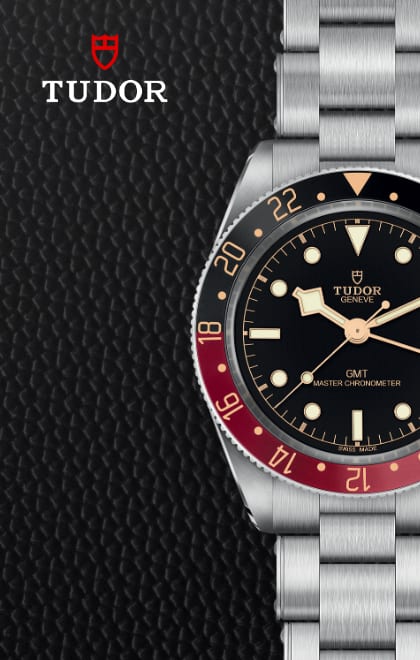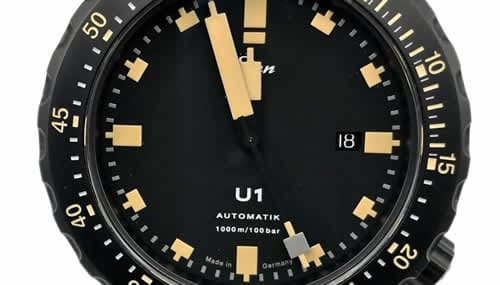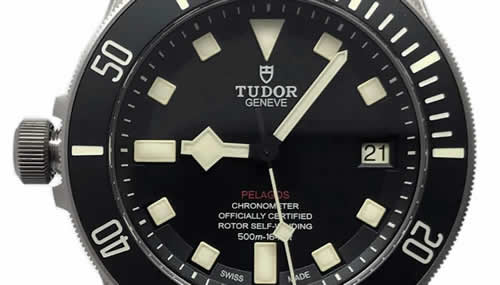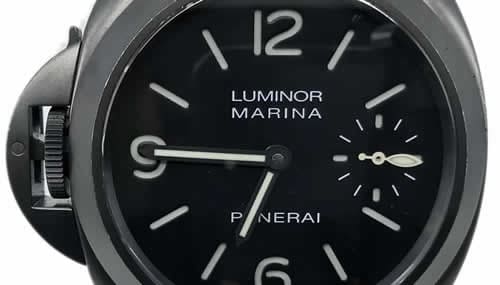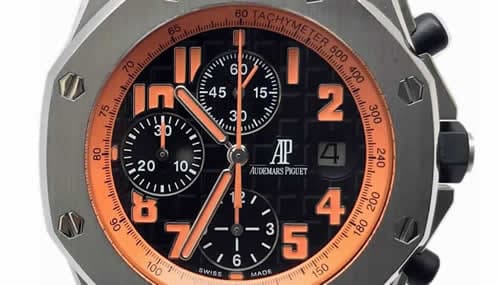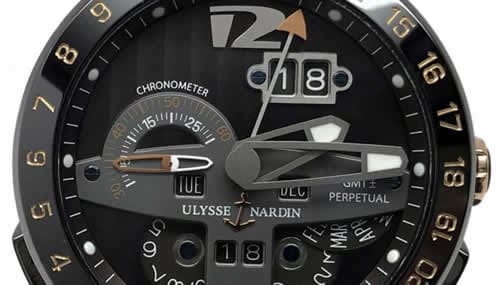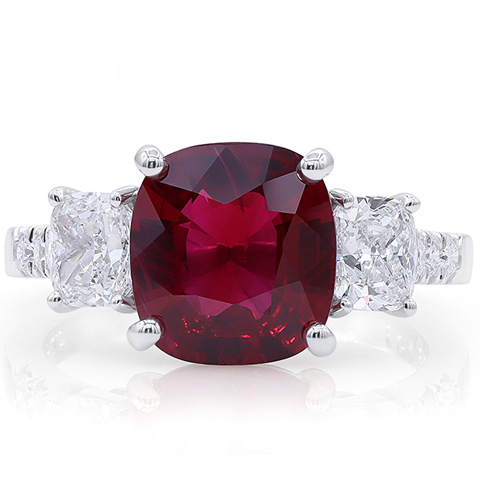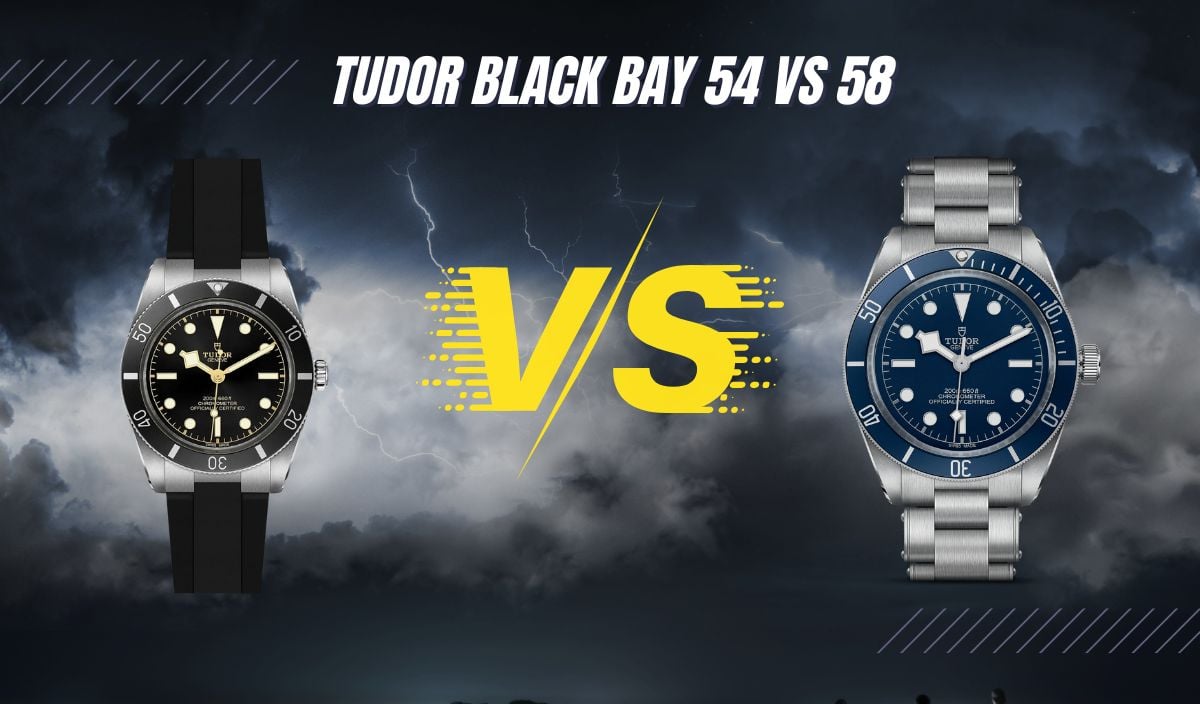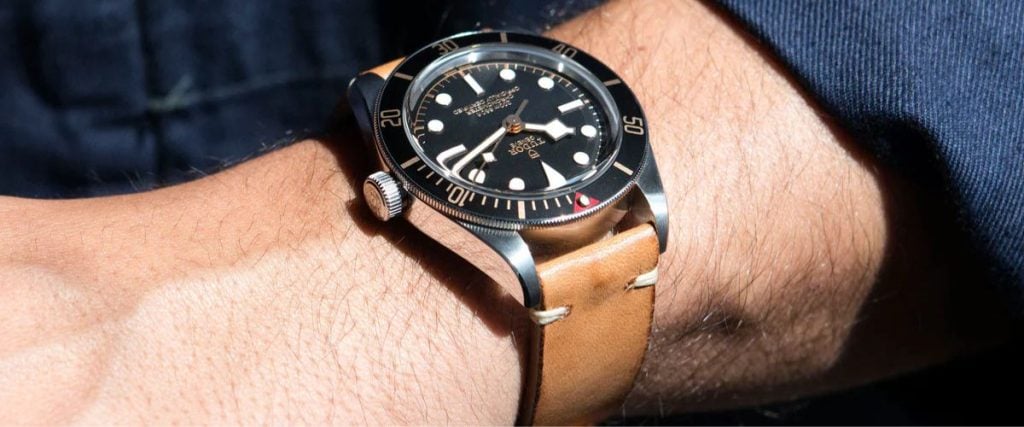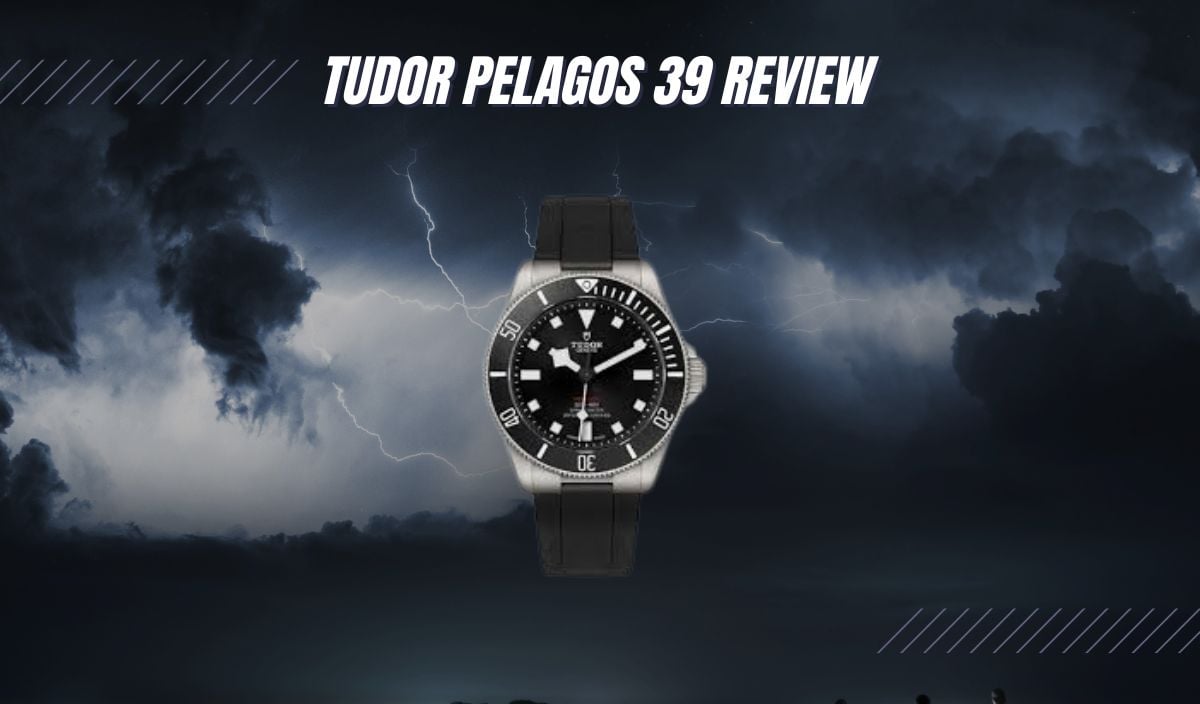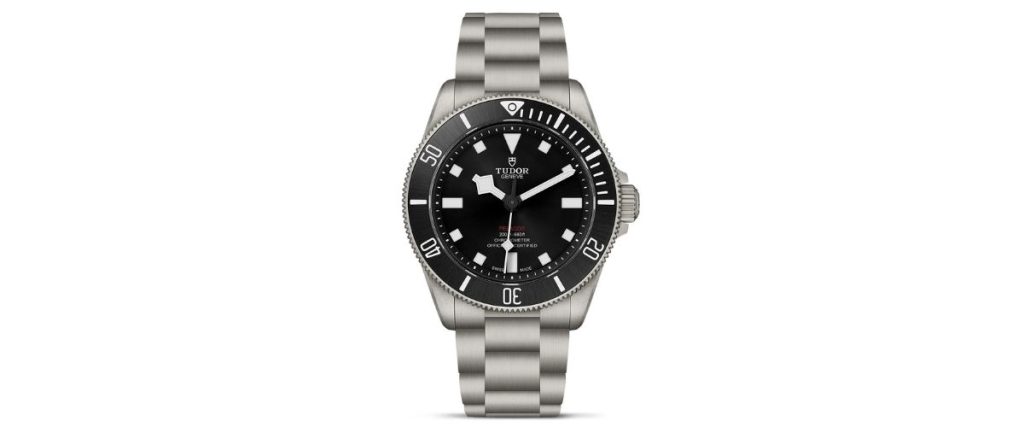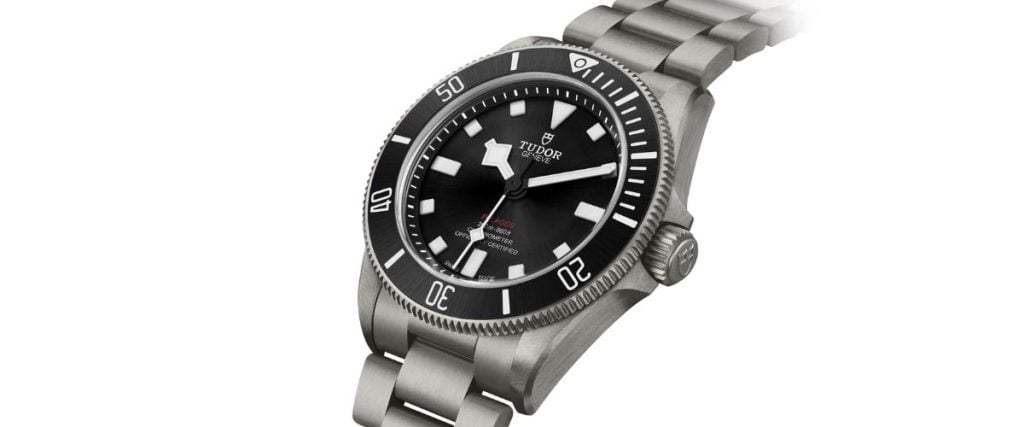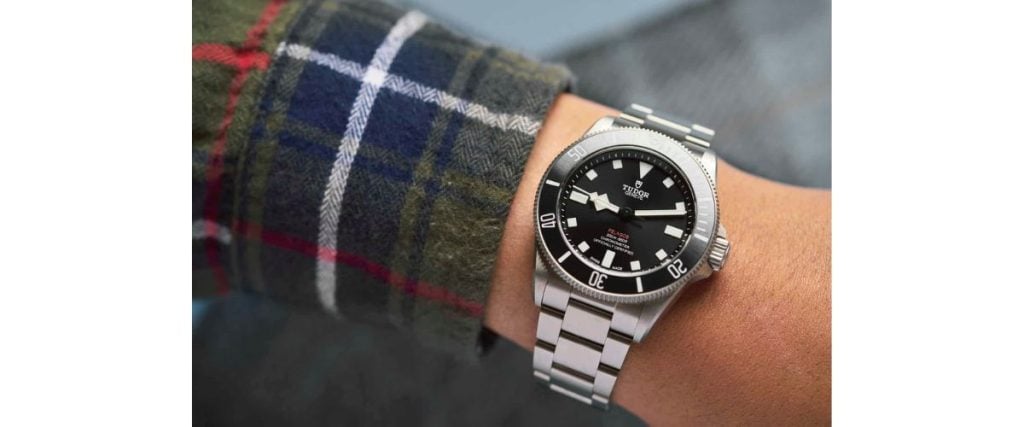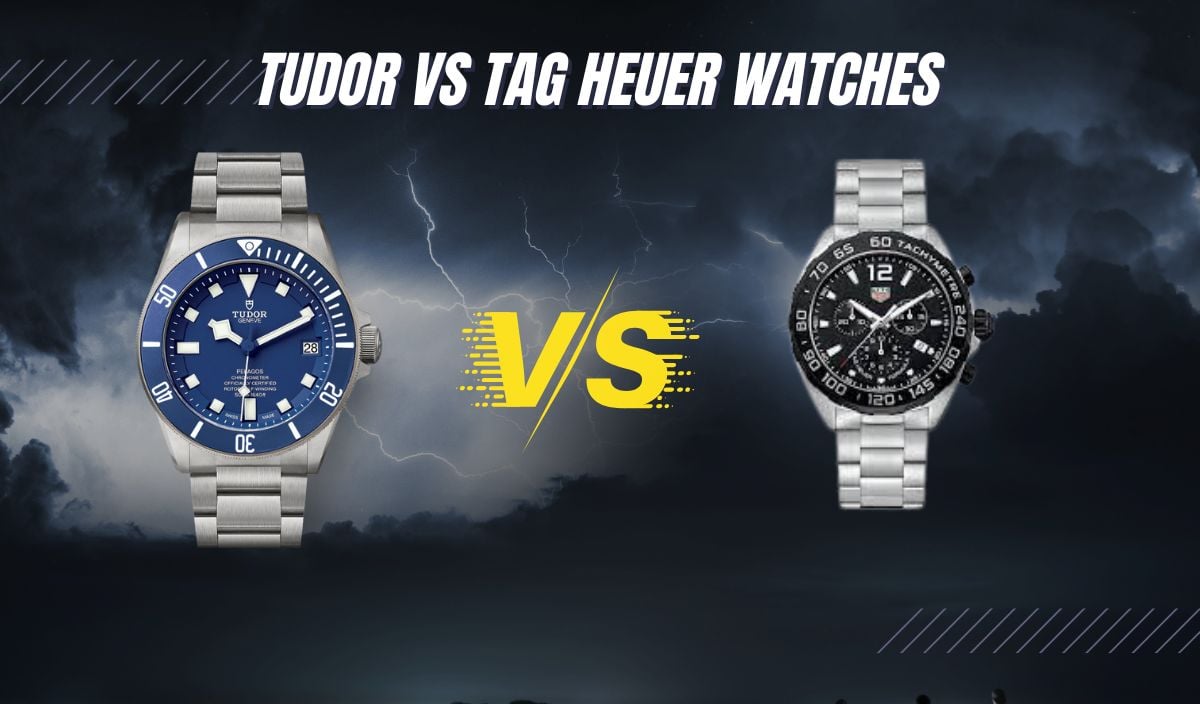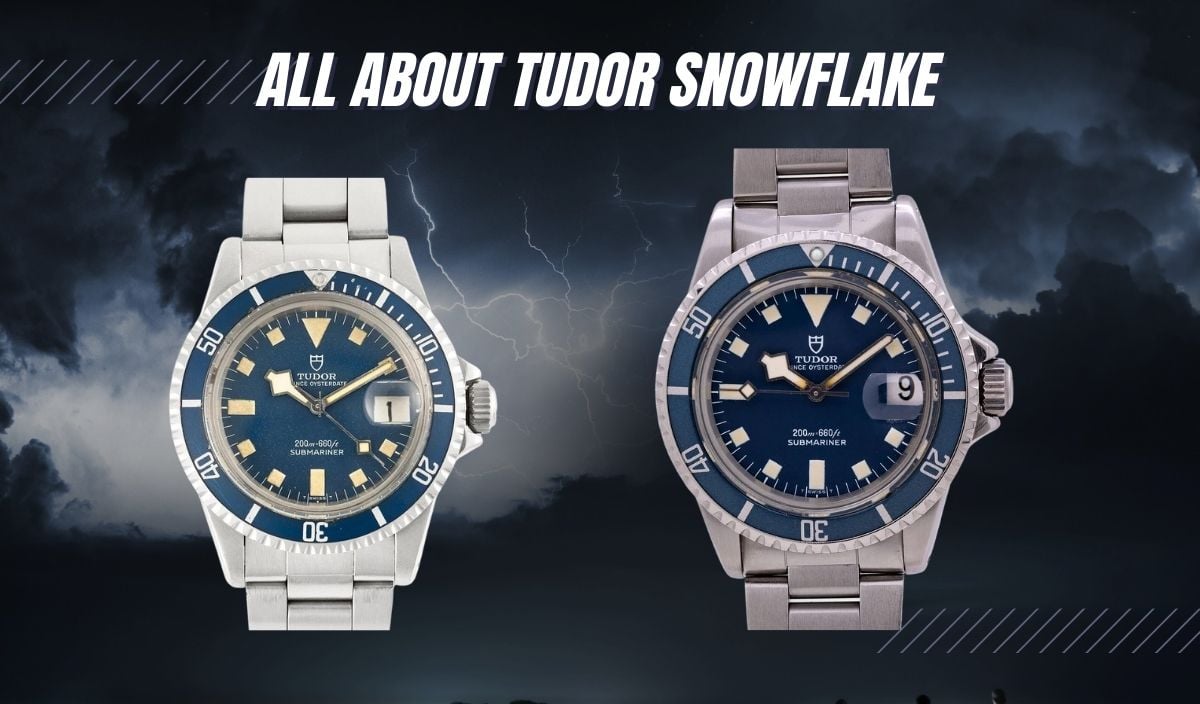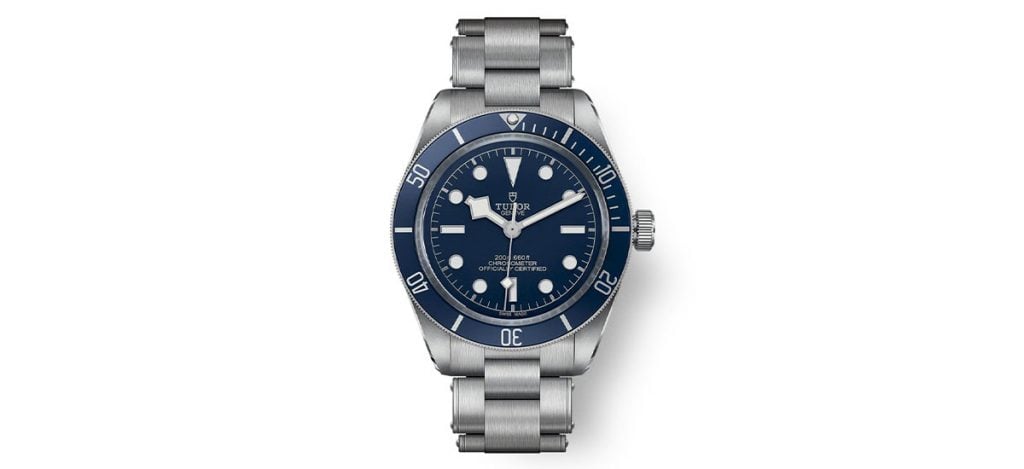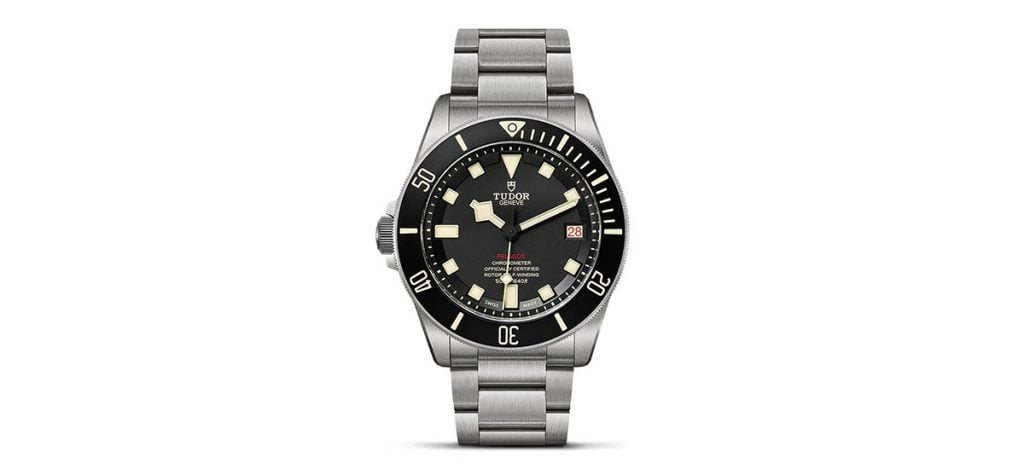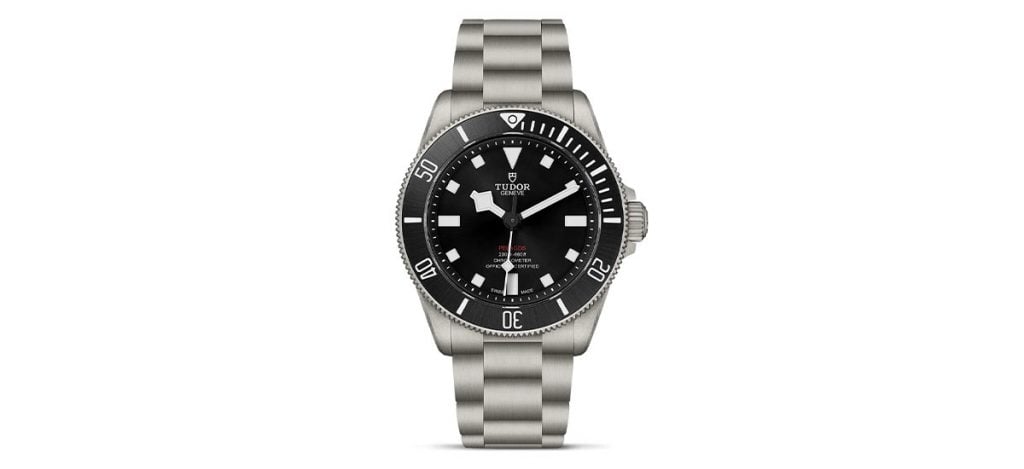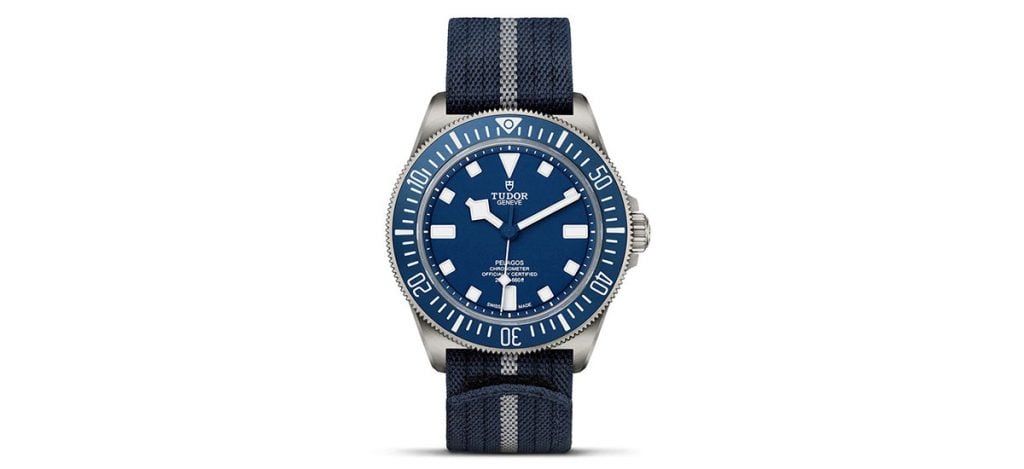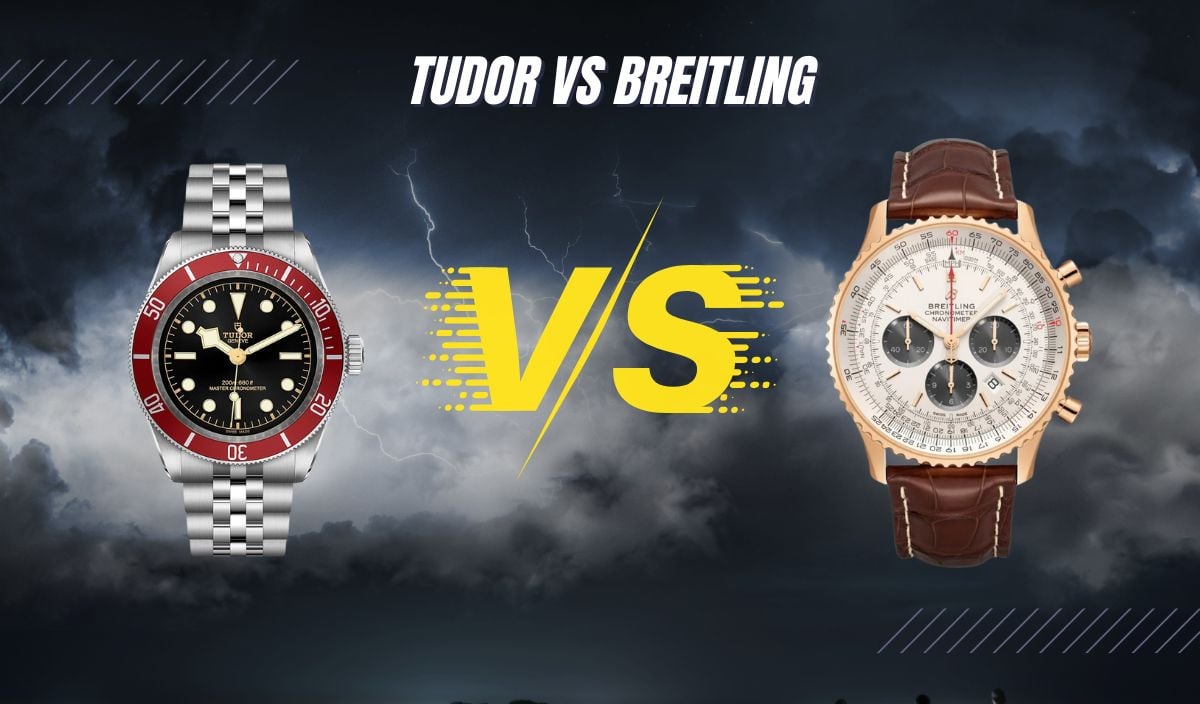
With so many impressive watch brands out there, it’s not always easy to know where to start. They all offer something different: different designs, materials, technologies, and totally different price points. But of course, there are some names that stick out more than others, and two of the biggest ones in my eyes are Tudor and Breitling.
These two luxury brands are known all over the world, and yet they’re also worlds apart in what they offer and the people they attract. Tudor, with its understated charm and rich heritage, is famously tied to Rolex and focuses on timeless design and accessible luxury.
Breitling, on the other hand, exudes boldness and adventure and is known for its robust pilot and dive watches that are as functional as they are stylish. Different strokes for different folks, right?
That doesn’t mean one’s better than the other. It all boils down to what you’re looking for in a timepiece. In this blog, we’re going to be looking into both brands to help you figure it all out.
From their fascinating histories to their current collections, movements, and design DNA, I’ll break it all down for you. By the end, you’ll have a clearer picture of which brand aligns with your taste, lifestyle, and budget.
Brand Heritage
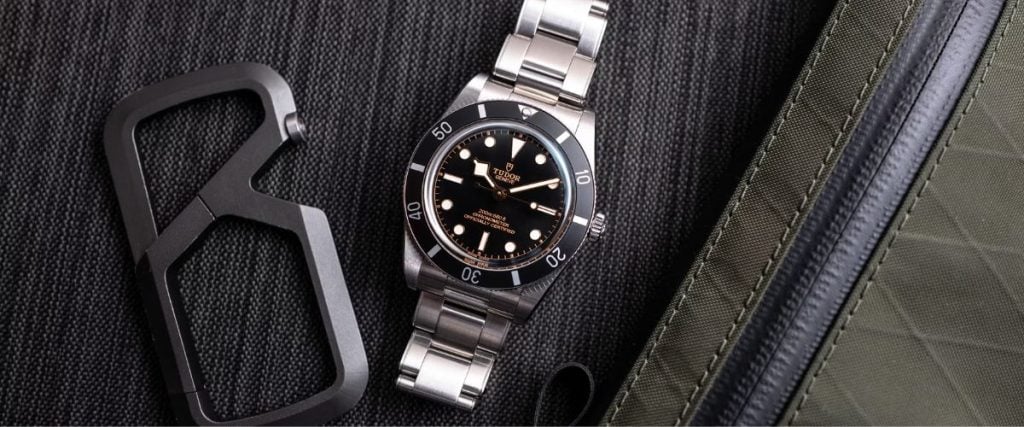
For Breitling, we need to go back quite far to 1884. Here, in a small Swiss town called Saint-Imier, a young watchmaker named Léon Breitling opened a modest workshop.
He began building watches with a focus on precision, innovation, and elegance, and even early on, the company became known for pushing boundaries. Léon’s passion for accuracy and his inventive mindset laid the foundation for a brand that would become a giant in the world of horology.
Breitling started out specializing in chronographs, tools that went beyond simply telling the time. These early creations played crucial roles in industries like science and engineering and helped make Breitling synonymous with precision. The brand’s commitment to excellence caught on quickly, and it didn’t take long for its reputation to spread far beyond the Alps.
As aviation took off, literally and figuratively, Breitling became the go-to name for pilots needing accurate, reliable timepieces. In 1915, they introduced one of the first wrist-worn chronographs designed for aviators, and in 1952, the iconic Navitimer was born.
With its slide rule bezel for in-flight calculations, it became an indispensable cockpit tool, earning its place as one of the most legendary pilot’s watches in the watchmaking world.
But Breitling didn’t stop at aviation. In 1957, they dove into the deep blue with the launch of the SuperOcean, a rugged, water-resistant instrument for divers.
Later decades brought even more innovations, like the Emergency watch in 1995, featuring a built-in distress beacon, and the Chronomat, a luxury sports watch for those who wanted beauty and durability.
Today, Breitling stands as a symbol of innovation and adventurous spirit. Its collections, from the aviation-inspired Navitimer to the ocean-ready SuperOcean and the versatile Chronomat, reflect a brand deeply rooted in history while embracing modernity.
Established in 1926, Tudor’s story is intricately tied to the vision of Hans Wilsdorf, the founder of Rolex. From its inception, Tudor was designed to echo Rolex’s renowned quality and reliability while being accessible to a broader audience. This duality—luxury craftsmanship at an attainable price—became the bedrock of Tudor’s identity.
Tudor’s origins trace back to the Swiss watchmaking house of Veuve de Philippe Hüther, which registered the name “Tudor” on behalf of Hans Wilsdorf. Wilsdorf, inspired by his English heritage, chose the Tudor name as a tribute to the Tudor period in England, a time synonymous with strength and refinement.
Tudor’s first wristwatches, launched in 1932, were simple yet resilient. These timepieces bore a clear emphasis on durability and legibility, featuring cream-colored dials, luminescent Arabic numerals, and blue baton hands. By 1946, Tudor had evolved into Montres TUDOR S.A., with Rolex’s backing for movement precision and distribution.
The Tudor Oyster, released in 1947, remains one of the brand’s most iconic launches. It borrowed Rolex’s patented waterproof Oyster case as proof of their commitment to robust engineering.
The Oyster Prince followed in 1952, combining reliability with an elegant three-link bracelet, further solidifying Tudor’s appeal as a tool watch for professionals and adventurers.
The 1960s saw Tudor perfect its design language with the introduction of the legendary “Snowflake” hands and square hour markers. Initially developed for the French Marine Nationale, these features prioritized underwater visibility and became a hallmark of Tudor’s dive watches.
While Tudor’s popularity waned slightly during the quartz crisis of the 1980s and 1990s, the 21st century marked a dramatic resurgence. Tudor returned to its roots, embracing its legacy of robust tool watches while incorporating modern aesthetics and technology.
For example, the Black Bay collection, launched in 2012, epitomizes this renaissance, offering modern features, in-house movements, and 200-meter water-resistant cases for the contemporary diver. Today, you also have models like the Pelagos and Ranger embodying Tudor’s ethos of timeless design rooted in history.
Model Variety
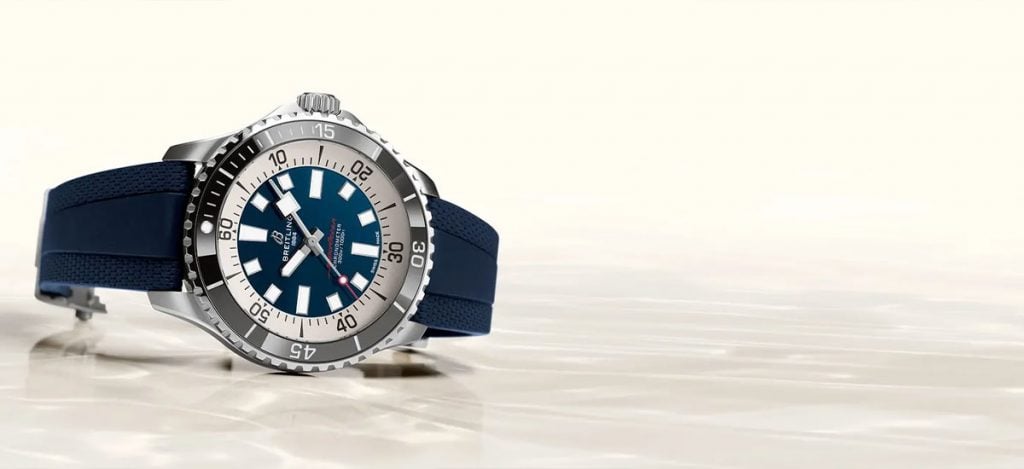
Breitling excels in offering something for everyone, with an impressive range of watches designed for various wrist sizes, preferences, and lifestyles. From the petite 28mm Chronomats to the bold 48mm Super Avengers, Breitling ensures that every wrist, no matter how large or small, can find its perfect fit.
Breitling’s portfolio spans dress watches, pilot’s watches, dive watches, and even vintage-inspired designs. The Navitimer is arguably Breitling’s most recognizable model, embodying the brand’s strong aviation heritage.
Since its debut in 1952, this iconic pilot’s watch has been a reliable tool for mid-flight calculations, thanks to its distinctive slide-rule bezel. Over the years, the Navitimer has evolved with modern twists but remains a symbol of precision and practicality.
For diving enthusiasts, Breitling’s SuperOcean collection is a standout. Introduced in 1957, it offers water-resistant durability, luminescent hands, and rugged construction suitable for both professional divers and recreational underwater adventures. The retro-inspired SuperOcean Heritage, launched in 2007, adds a sporty yet nostalgic touch to the lineup.
Breitling’s Chronomat collection is a personal favorite of mine and offers versatility with its functional chronograph complications and integrated Rouleaux bracelets, giving it a distinct flair. This line is particularly popular with women thanks to the many pastel-coloured and diamond-set dials adding an element of sophistication.
Tudor, while less expensive than Breitling, has a focused collection that emphasizes quality over quantity. Their offerings are slightly smaller in scale, with models ranging from 31mm to 43mm, but the brand makes up for it with an emphasis on craftsmanship and purpose-driven design.
At the heart of Tudor’s lineup is the iconic Black Bay collection, a series of diving and tool watches that encapsulate the brand’s expertise in robust and legible timepieces.
The Black Bay’s roots trace back to Tudor’s first diver’s watch in 1954, and its legacy is evident in features like the signature snowflake hands. From standard Black Bay divers with 200-meter water resistance to the Pelagos models boasting an impressive 500m, Tudor’s commitment to the diving community is clear.
For those seeking a more refined aesthetic, Tudor offers the Royal collection, which bridges the gap between sporty and luxurious. With integrated bracelets, diamond indices, and sizes ranging from a dainty 28mm to a commanding 41mm, the Royal is a versatile option for both men and women.
Tudor hasn’t forgotten about its female clientele either. The Clair de Rose collection, introduced in 2017, is a line of steel automatic watches that exude feminine charm.
For adventurers, the Ranger and compact Pelagos 39 cater to those who appreciate rugged performance in smaller, versatile packages.
The Pelagos 39, for instance, reimagines Tudor’s dive watch heritage with a sleeker design and updated movement, making it ideal for those who want understated sophistication.
Design
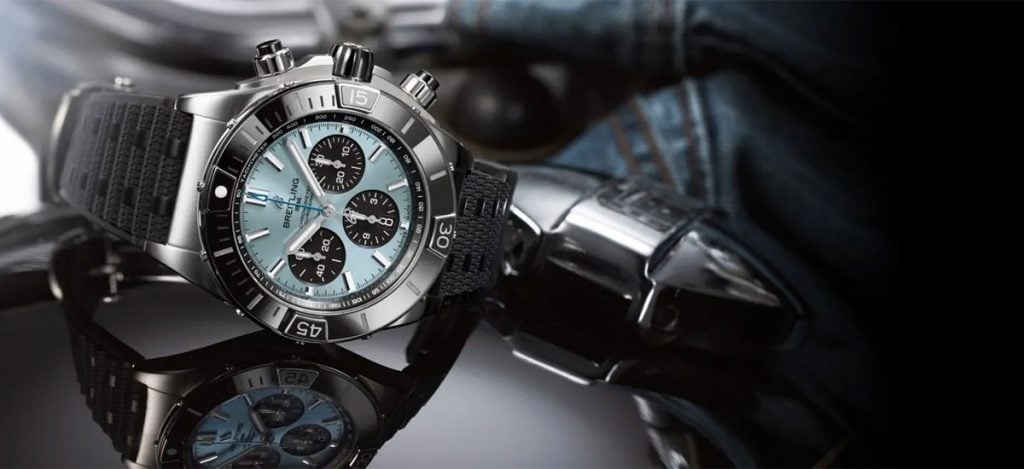
Breitling’s design DNA is deeply rooted in adventure, precision, and functionality. From the beginning, the brand has been a pioneer in producing watches that serve a practical purpose, and this focus has remained central throughout its history.
Whether it’s for pilots, divers, or extreme adventurers, Breitling’s watches are designed to withstand the harshest conditions while maintaining cutting-edge style.
Breitling’s designs are bold, often oversized, and purpose-built, making them instantly recognizable. The brand is particularly famous for its aviation-inspired designs, like the iconic Navitimer with its slide-rule bezel.
Breitling’s watches are known for their large, legible dials, prominent bezels, and functional complications that cater to professionals, such as chronographs, GMTs, and tachymeters.
The Chronomat collection, for instance, exemplifies Breitling’s innovative design with its rider tabs on the bezel and integrated bracelets that balance robustness with elegance.
Meanwhile, Tudor’s design is more of a reflection of its deep-rooted history and heritage, with its designs often paying homage to iconic Rolex models like the Submariner.
They are famed for their tool-watch pedigree, and like its sibling brand Rolex, the designs strike a balance between luxury and durability. They’re also versatile and functional, often made with military, diving, and adventure enthusiasts in mind, but always with an emphasis on quality craftsmanship and timeless style.
Tudor’s Black Bay collection, for example, exemplifies this blend of ruggedness and heritage. The Black Bay’s design is inspired by vintage Tudor dive watches, especially the submariner-style cases and rotatable bezels reminiscent of models from the 1950s.
But Tudor also introduced its Snowflake hands in the Black Bay collection, a distinct design element that sets it apart from its competitors, evoking a sense of utilitarian elegance.
The Snowflake hands are a direct nod to the brand’s military and diving roots, offering better legibility underwater, a signature feature that speaks to Tudor’s functional design philosophy.
Build Quality & Materials
Breitling has long been at the forefront of innovation when it comes to the materials used in their timepieces, making sure that each watch balances durability, aesthetics, and functionality.
Their case materials showcase a commitment to both strength and sophistication. Stainless steel is the backbone of many of their collections, but Breitling has expanded its use of premium alloys to include gold, titanium, and even ceramic for specific models.
This ensures their timepieces are not only visually striking but can endure the rigorous demands of adventure, aviation, and diving.
One of Breitling’s standout material innovations is Breitlight. This patented material is a unique, lightweight composite that is stronger than titanium and much lighter than steel, providing impressive resistance to scratches, corrosion, and extreme temperatures.
The result is a timepiece that feels significantly lighter on the wrist while remaining highly durable. Breitlight also has a distinctive matte finish and a darker, almost “stealthy” look, which contributes to the brand’s modern aesthetic.
When it comes to finishes, Breitling’s attention to detail is evident in the intricate polishing and brushing of their cases. Their dials are also beautifully finished, often made from brass plates, which are drilled and then polished or lacquered to achieve a specific color and depth.
Tudor’s approach to materials and build quality is centered around affordability without sacrificing luxury. One of the most popular materials that Tudor uses is 316L stainless steel, a standard in the watch industry for its resistance to corrosion, scratch resistance, and ability to hold finishes over time.
However, Tudor doesn’t shy away from pushing boundaries. The Black Bay 58 18K is a perfect example of this, as it’s the first Tudor diver’s watch to feature solid 18-carat yellow gold.
Additionally, Tudor has ventured into titanium and ceramic for select models, offering a range of materials that cater to those looking for high-end aesthetics with practical functionality.
Tudor also places significant emphasis on finishing, ensuring their watches are both refined and resilient. The brand often utilizes a mix of brushed and polished surfaces, with an emphasis on creating a visually dynamic and tactile feel.
The sunray brushed finish, commonly found on the Black Bay’s dials, catches the light in an appealing way, while the matte dials add a modern, understated touch.
Movements
Breitling’s commitment to in-house movement production is a cornerstone of the brand’s identity, offering COSC-certified chronometers across their entire collection. One of Breitling’s best-known movements is the B01, which boasts a 70-hour power reserve and chronograph complication.
Breitling also demonstrates an impressive ability to push the boundaries of horology with haute horlogerie complications, such as perpetual calendars and split-second chronographs, though these are rare and often featured in limited-edition models.
We also have to mention Breitling’s famous SuperQuartz movement, another in-house caliber that is quartz-powered and claims to be ten times more accurate than ordinary quartz.
In terms of movement finishing, Breitling showcases the technical complexity of its calibers with the use of perlage and Côtes de Genève stripes. These finishing touches are not just for aesthetic appeal, but they signify the attention to detail and precision that Breitling is known for.
Tudor’s approach to movements is rooted in simplicity and reliability. While Tudor may not offer the same level of technical complexity as Breitling, they excel in providing robust and reliable movements that serve the needs of their customers.
The brand’s focus remains on time-only and chronograph complications but ones that are still chronometer-certified for reliability.
The MT5612 movement found in many of Tudor’s models, such as the Black Bay, is a solid choice, offering a 70-hour power reserve. Similarly, the MT5813 chronograph movement provides a smooth and precise chronograph function, adding a dash of functionality to Tudor’s classic designs.
While Tudor’s movement finishing may not be as elaborate as Breitling’s, the brand does incorporate finishing elements like brushed surfaces and Côtes de Genève on some models.
The movement’s finishing is more modest, reflecting the brand’s focus on offering high-quality, durable watches at an accessible price point without overemphasizing ornate details.
Price Point
Breitling’s price range starts at around $3,500 and can rise to $45,000 for high-end models, reflecting the brand’s focus on luxury and prestige.
Their pricing is justified by the use of premium materials like titanium, gold, and Breitlight, alongside in-house movements and sophisticated complications like perpetual calendars and split-seconds chronographs.
Breitling offers exceptional technical innovation and craftsmanship, making their timepieces highly desirable for collectors who want not just a watch but a statement. Their high-end models cater to those seeking exclusivity and prestige in addition to robust functionality, particularly in aviation and diving.
Tudor, renowned for being the king of affordable luxury, offers exceptional value, with prices starting around £2,500 for models like the 1926 and Royal and going up to $9,000 for more premium options with diamond decorations or 18ct gold elements.
Tudor delivers Swiss-made quality, in-house movements, and timeless design at a fraction of the cost of luxury counterparts. While their materials are more conventional, like stainless steel and titanium, they offer incredible value for money, making Swiss precision and affordable luxury accessible.
Conclusion
Both Tudor and Breitling offer exceptional timepieces, but it’s clear they cater to different tastes and budgets. Tudor is perfect for those seeking affordable luxury, delivering Swiss craftsmanship and reliable performance at a more accessible price.
On the other hand, Breitling is ideal for collectors looking for premium materials, advanced complications, and a luxury experience with more opulent designs. It ultimately comes down to personal preference and budget: Tudor offers great value, while Breitling delivers prestige and sophistication.


